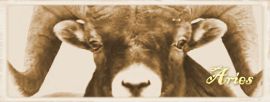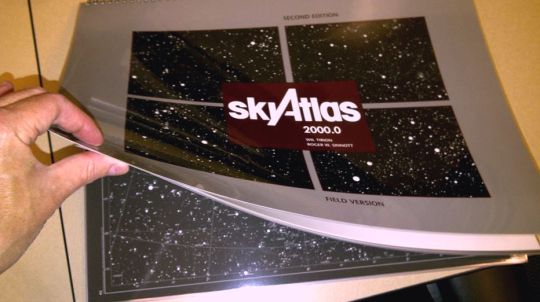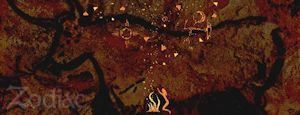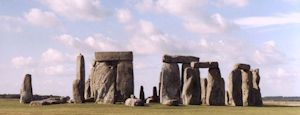
The sky is divided into 88 parts. If you play connect-the-dots within these boundaries, some of the patterns resemble the names, but most were never meant to. Just like Washington State doesn’t look like George Washington. Click on the names below for a snarky review of the starlore of the constellations and the stuff we see within them.
Andromeda – the princess
She was chained to a rock where the Kraken couldn’t miss her, presented right out front by the boat docks with a big sign that said “Take the girl, leave us alone.”
Antlia – the air pump
In the 1670’s Denis Papin invented the air pump, leading to the making of a little plastic diver who hovers over the plastic treasure chest in your fish aquarium.
Apus – the bird of paradise
It gets its formal name from the Greek word “apous” which means “footless.” That’s pretty weird. The backstory begins with Magellan.
Aquarius – the water bearer
In ancient Babylon, essentially Iraq, there between the Tigris and Euphrates rivers, when the Sun entered this part of the sky back then it was their monsoon.
Aquila – the eagle
This represents the eagle that carried Zeus’ thunderbolts around for him. Whenever Zeus wanted to thunderbolt something he would say “Hey Aquila, bolt me.”
Ara – the altar
After Cronus killed his dad, he ate his kids. But mom switched baby Zeus for a big rock, by putting a diaper on it or something, and Cronus ate that by mistake.
Aries – the ram
The Babylonians at first decided this one was a farm worker, but later changed it to a ram. To the Chinese it is a couple of government inspectors.
Auriga – the charioteer
Erichthonius invented the four-horse chariot. One might think you simply take a three-horse chariot and add one more horse. I mean, that’s the first thing I would try.
Boötes – the herdsman
He is usually called the herdsman but sometimes he is the plowman. Herding or plowing, free range cowboy or dirt farmer.
Caelum – the sculptor’s chisel
Named in honor of the sculpting chisel that one uses to chip away all of the stone which is hiding the artsy stuff one wants to reveal.
Camelopardalis – the giraffe
It’s a very northerly constellation which represents a giraffe, not a camel. I know it sounds like it should be a camel. There’s a reason for that.
Cancer – the crab
The Crab is not a connect-the-dots thing, unless you are trying to draw Paul Revere’s hat. You know, the one that looks like his horse stepped on it.
Canes Venatici – the hunting dogs
These two pooches are often shown on leashes held by the neighboring constellation Boötes. The dogs and their master are chasing Ursa Major, the Great Bear.
Canis Major – the greater dog
One interesting story from olden times says the dog is actually Laelaps, a magical hound that was destined to always catch his prey.
Canis Minor – the lesser dog
It is essentially just two stars, Procyon and Gomeisa. So it’s like one of those little wiener dogs I guess.
Capricornus – the sea goat
Seagoat is the oldest known name still in use for anything in the whole sky. People have called this group of stars the Seagoat for more than 7000 years.
Carina – the keel
It is a word that means “keel” but the constellation is more than that. It’s the main body of the good ship Argo.
Cassiopeia – the queen
This was before selfies so she spent most of her time sitting in a “W” shaped chair gazing at her own face in a mirror, bragging about her high cheek bones.
Centaurus – the centaur
A man-horse dude named Chiron. He was a wise and helpful centaur, compared to most. He gave fatherly advice to Hercules, for example. Until Hercules killed him.
Cepheus – the king
The myth mostly revolves around the ongoing struggle of religious discord that always comes with liberal upstarts challenging conservative church dogma.
Cetus – the whale
Association with a whale goes way back but Greek astronomers added the whole Andromeda-drama, which involves a monster known as the Kraken.
Chamaeleon – the chameleon
The constellation Chamaeleon represents a chameleon, the color-changing lizard, so nothing lost in translation there. You do lose an “a” when you spellcheck it.
Circinus – the compass
It’s the thingy you use to draw perfect circles like Charlie Brown’s head. At first glance you probably thought Circinus was about the circus, but sadly, no.
Columba – the dove
There are two dove stories. One involves a guy who loaded his wife and his three sons and their wives and millions of animals into a boat with one little window.
Coma Berenices – berenice’s hair
Not only was she a real queen, she was the original drama queen. In many ways this was the time of real-life games of thrones.
Corona Australis – the southern crown
It used to be named Corona Austrina. The IAU, same magnificent bastards whose hatred of Pluto led to its utter and complete humiliation, changed it in 1955.
Corona Borealis – the northern crown
It is easy to find, just a semi-circle of bright stars high in the summer sky. It does look kind of like a tiara I suppose.
Corvus – the crow
Crows and ravens are wise and always doing great things like stealing stuff from the gods and giving it to humans.
Crater – the cup
The allegorical drawing is usually of the type of cup that has two opposing handles, for serious wine consumption.
Crux – the southern cross
Down under, where folks eat something disgusting called Vegemite, and where they call lobsters “shrimps,” the stars of Crux never set.
Cygnus – the swan
There is a dark lane that separates the cloudy path of our galaxy into two parts here. It’s known as the Great Rift, a long cloud of dust blocking our view in that direction.
Delphinus – the dolphin
At some point the brighter stars here came to be known as Job’s Coffin. Job is the guy in the Bible who becomes a game piece in a competition between good and evil.
Dorado – the swordfish
A swordfish, though the name is associated with dolphinfish. Dolphinfish is associated with mahi mahi. Mahi mahi is associated with basil butter and mango chutney.
Draco – the dragon
To the Romans Draco was killed by their goddess Minerva. To the Greeks Draco was killed by their hero Hercules. Kill a dragon and you’re family. Fail and you’re an orphan.
Equuleus – the little horse
It’s usually drawn as just a horse’s head, sometimes peaking out from behind Pegasus. Maybe they’re related, on the non-winged side of the family.
Eridanus – the river
It’s winding like a river from Orion’s kneecap to points farther south. It is probably named after Eridu, an ancient city in old Babylonia.
Fornax – the furnace
It’s the little furnaces that chemists use in the laboratory to cook things you shouldn’t eat. I’m sure you can order one on Amazon or maybe talk to your local meth dealer.
Gemini – the twins
To the Greeks they were twin sons, same mother but different fathers. Like a lot of Greek stories the details of just how that worked are kind of sketchy.
Grus – the crane
Please note that by “crane” we mean the large gangling-legged fish-eating bird, not the big load-lifting construction machine.
Hercules – the hero
Several hilarious misunderstandings led to Herc having to perform in a dozen zany episodes, altogether resembling the first season of a doomed sit-com.
Horologium – the clock
Nicolas Louis de Lacaille created it and drew it as an old-timey grandfather hall clock, the sort with a pendulum and weights.
Hydra – the water snake
The largest of all 88 constellations. It’s huge. It forms a line that wraps around the sky all the way from the stars of Cancer to those of Libra.
Hydrus – the male water snake
Having two sky serpents confirms the old adage that “snakes travel in pairs” which is a phrase I assume actually refers to con-artists and other capricious mountebanks.
Indus – the indian
It isn’t clear which despicable oppression by European conquerors it’s meant to commemorate. Regardless, most starhoppers associate it with Native Americans.
Lacerta – the lizard
A small constellation near Cassiopeia which looks like her but is a smaller “W” shape. It is considered part of the Perseus Group even though there is no lizard in that story.
Leo – the lion
Shows up in spring, when frogs wake up, crocuses start blooming, and pudgy old guys begin meandering around Lowes in cargo shorts and birkenstocks.
Leo Minor – the smaller lion
Squeezed in between Leo and the Big Dipper, like how Idaho was formed from the leftover region created by forming the surrounding states.
Lepus – the hare
Basically a rabbit with longer legs and ears. It’s located right beneath Orion, dangerously close to being stepped on.
Libra – the scales
By far the newest of the zodiacal membership. Odd that there is a machine for weighing stuff in the line-up of monsters and zoo critters.
Lupus – the wolf
Way down south, it was recognized as the wolf by Ptolemy a couple of thousand years ago, notable because Ptolemy was mostly concerned with stuff in the north.
Lynx – the lynx
In the late 1600’s Johannes Hevelius named it after the wild cat because those animals have eyesight good enough to see the stars here and humans don’t.
Lyra – the lyre
On some old-timey maps it is depicted as a vulture with a small lyre in its mouth. Clearly this one was designed by a committee.
Mensa – the table
Lacaille meant for it to be named “Table Mountain” after a place in Africa. People shortened it to “Table” and also shortened Nicolas Louis de Lacaille to just Lacaille.
Microscopium – the microscope
“Where the telescope ends, the microscope begins. Which of the two has the grander view?” ~ Victor Hugo.
Monoceros – the unicorn
Plancius named it after the unicorns mentioned in the Bible. So it’s not associated with any of the wacky ancient mythical stories, other than the ones in the Bible.
Musca – the fly
Some map maker called it The Fly except there was already a fly up north which was part of Aries the Ram. I’ll just let astrologers chew on that fact for a bit.
Norma – the carpenter’s square
A southern constellation. The name refers to the thingy a carpenter uses to make stuff look normal.
Octans – the octant
Named after a celestial navigation instrument called an octant, which is better than a quadrant, but not as good as a sextant, and no where near as good as GPS.
Ophiuchus – the serpent bearer
A guy who figured out how to kill snakes then bring them back to life. He figured if it worked on snakes it should work on humans too. The gods killed him of course.
Orion – the hunter
There is the obvious belt, although Orion lived BP (Before Pants) so he wears a short skirt, or kilt or such, and below that hangs his big, um, sword.
Pavo – the peacock
The name means Peacock, and its brightest star is also named Peacock. Coincidence? Are there any coincidences? Twenty four hours in a day, twenty four beers in a case.
Pegasus – the winged horse
It’s just the front half of a horse, and the wings. It’s good that they chose to use the front half because if they used the back half it might be confused with politics.
Perseus – the hero
The story behind the constellations of Perseus and those of his group is an ancient tale that is usually told from the perspective of the hero himself. It’s his patriarchal privilege.
Phoenix – the mythical bird
When the bird dies it burns in a flash to ash, and then the ash turns back into the bird and it starts all over squawking and flapping and pooping on a newspaper.
Pictor – the painter’s easle
The easel which held the artist’s canvas in the days before Photoshop. Fun fact, the word “easel” is the old German word for “donkey.”
Pisces – the fishes
Named in ancient Mesopotamia by astronomers in the easternmost region of the fertile crescent, or in biblical terms, the Whores of Babylon.
Piscis Austrinus – the southern fish
At one time many folks referred to these stars as being “The Great Fish” as opposed to being a “Not-So-Great Fish” I guess.
Pupis – the ship’s stern
It’s part of a group of constellations that represents the good ship Argo. These particular stars are the ass end of the ship.
Pyxis – the compass box
It honors the mariner’s compass. Short of the Internet itself, few things have shrunk our world like a free-floating magnetized needle.
Reticulum – the net
We mean the tiny network of lines in a certain type of telescope eyepiece. They are engineered into a lens element and are akin to the cross-hairs in a rifle scope.
Sagitta – the arrow
It’s one of the older names for a group of stars but then the bow and arrow was probably invented more than 60,000 years ago.
Sagittarius – the archer
We have two centaurs in the sky and this one wants to be associated with the fine sport of archery. So ignore the legs and focus on the bow.
Scorpius – the scorpion
Lots of bright stars in a long swooping curved shape like a fish hook. The brightest star is a huge red one smack dab in the heart of the beast.
Sculptor – the sculptor’s workshop
One of fifteen constellations designated to honor random 18th century crap by Abbé Nicolas Louis de Lacaille.
Scutum – the shield
A typical shield ranging from the Roman legionnaire sort, to one that ye olde knight of chivalry might carry along with so much armor he needs a crane to get on a horse.
Serpens – the serpent
What makes it special is that it is the only constellation that is divided into two parts. That is, the region of sky assigned to it is not contiguous.
Sextans – the sextant
Named by Johannes Hevelius in 1687 and it is not associated with any myths, other than the ones Hevelius told women about himself when the bars were closing.
Taurus – the bull
There are indications folks associated these stars with a bull all the way back to the copper age, which is really just the bronze age before the upgrade.
Telescopium – the telescope
Named to honor a specific telescope, the one at the Paris Observatory. But then the borders got rearranged and we wound up with a shorter and squattier design.
Triangulum – the triangle
One of the few examples where the connect-the-dots thing really does resemble the name. I mean, it makes a pretty damn good triangle.
Triangulum Australe – the southern triangle
This one was added by Amerigo Vespucci in the early 1500’s. He’s also the guy that figured out Columbus hadn’t found some part of Asia. Hence the name “America.”
Tucana – the toucan
Small but important, it contains some of our best examples of cosmic real estate, a dwarf galaxy and a globular cluster, both orbiting the Milky Way.
Ursa Major – the greater bear
It is one of the most significant constellations in the whole northern sky because it contains the Big Dipper.
Ursa Minor – the little bear
Important because it is home to Polaris, the north star. It is also home to the Little Dipper. If you can’t find it, put someone else in charge of steering the boat.
Vela – the sails
There use to be a bigger constellation called Argo Navis which included the whole ship. It’s as if it got chopped up and sold for parts.
Virgo – the maiden
Thousands of years ago this constellation was known to many as The Seed Furrow but it eventually evolved into a lovely young fertile maiden.
Volans – the flying fish
Unfortunately there is no cute little story here about a fish getting its wish to have wings or such. The only story we have is that it was named by some Dutch guy.
Vulpecula – the fox and the goose
A fairy tale, one of the gruesome sort where the fox murders some poor goose. But a fox has to eat too, and probably has to feed a whole den-full of cute little baby foxes.
Carpe Noctem














March 11, 2018
Astronomy